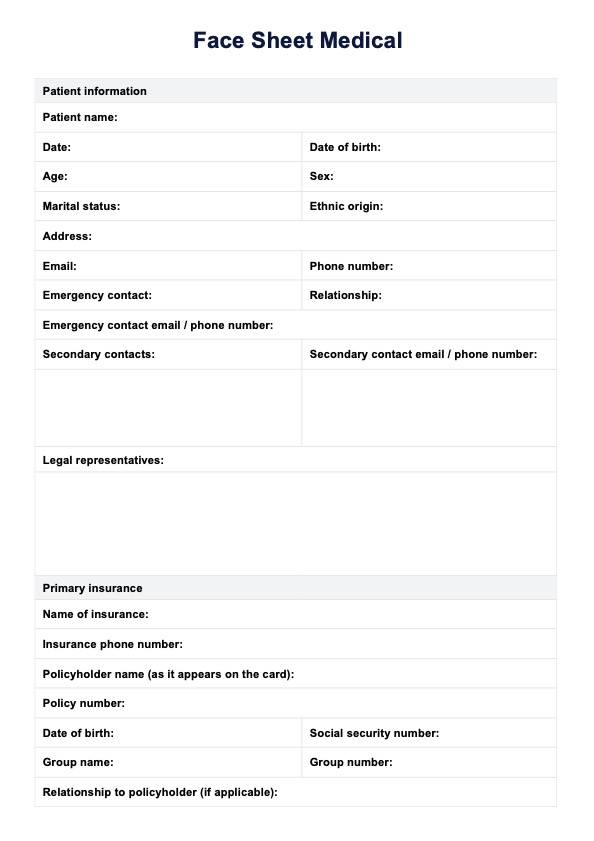The primary purpose of a medical face sheet is to provide healthcare professionals with a concise summary of a patient's critical information, including medical history, current medications, and allergies, to facilitate quick and informed decision-making.

Face Sheet (Medical)
Explore the benefits of using a medical face sheet for efficient patient care, including quick patient data access and insurance verification.
Face Sheet (Medical) Template
Commonly asked questions
Medical face sheets are typically updated by healthcare providers, such as nurses or doctors, who add new information or modify existing details based on the latest clinical assessments and patient interactions.
Yes, patients have the right to access and review their medical face sheet, usually through patient portals provided by healthcare institutions. This ensures transparency and enables them to verify or correct their personal and medical information.
EHR and practice management software
Get started for free
*No credit card required
Free
$0/usd
Unlimited clients
Telehealth
1GB of storage
Client portal text
Automated billing and online payments











